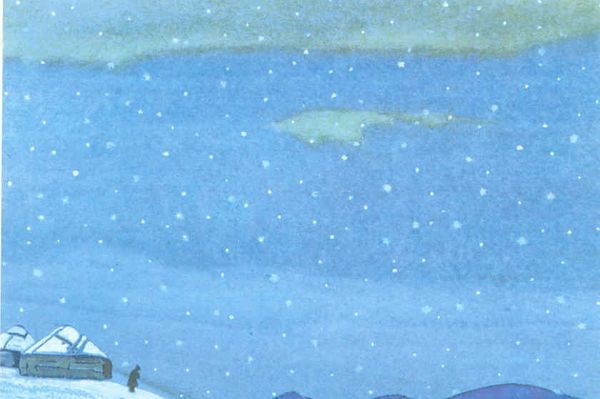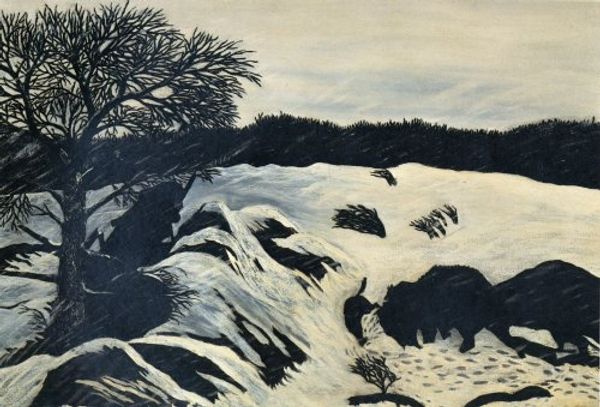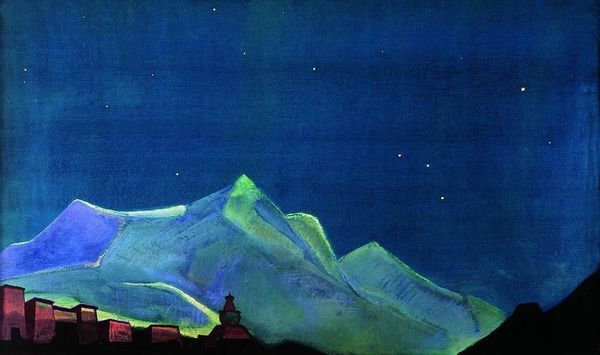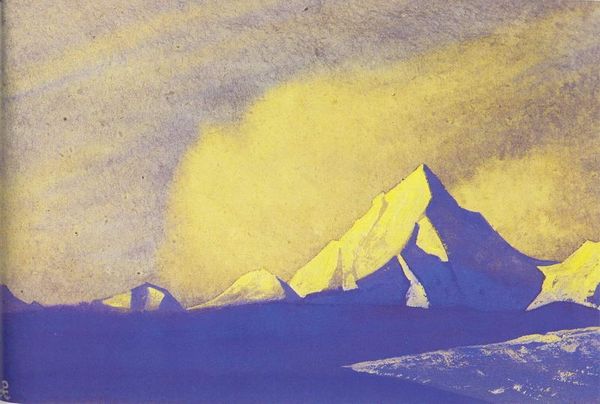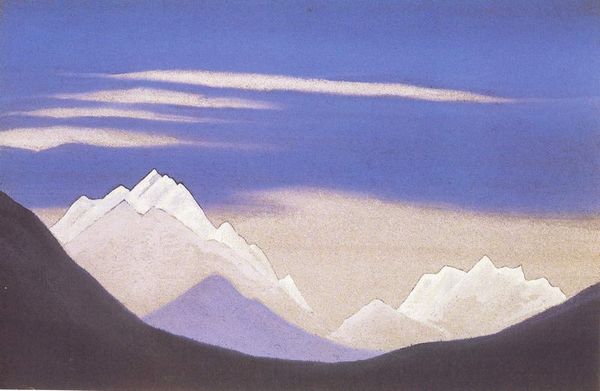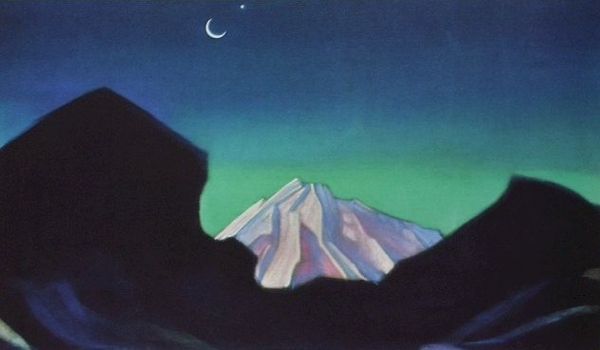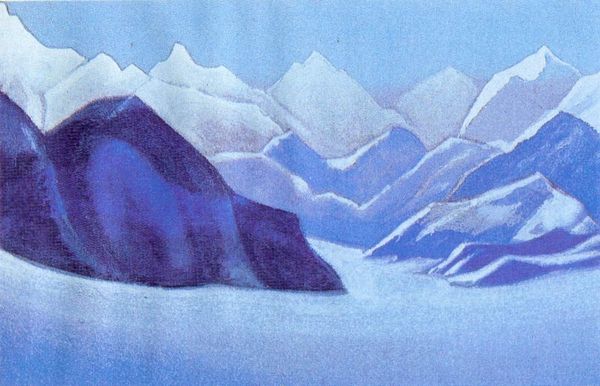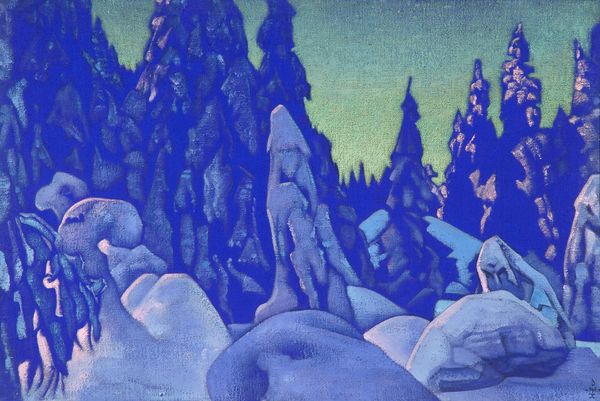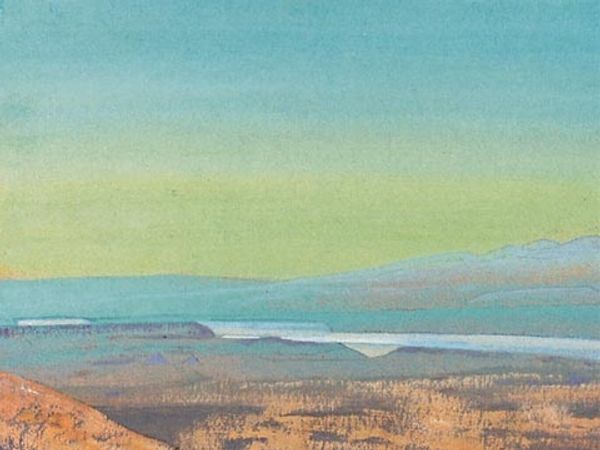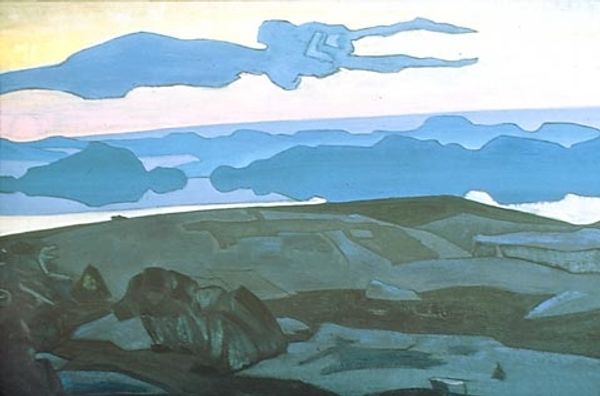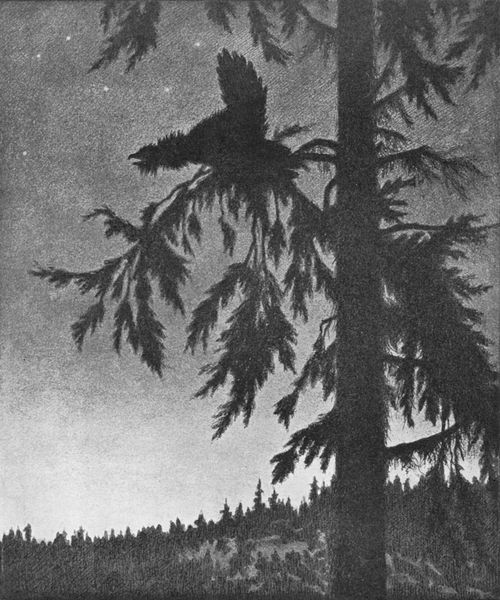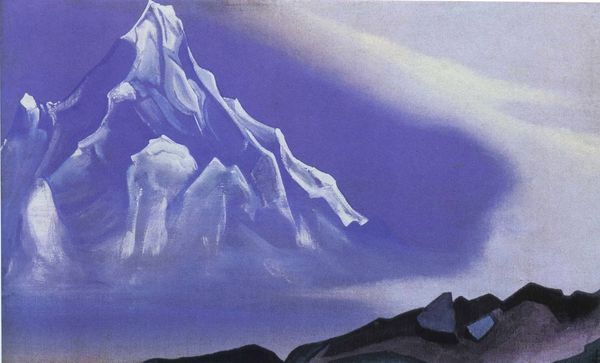
Copyright: Kiyoshi Saito,Fair Use
Curator: This is "Aizu Winter," a woodcut print made in 1970 by Kiyoshi Saito. The scene presents a snow-covered landscape under a subtly textured night sky. What’s your initial take? Editor: The mood strikes me first—it’s intensely still, but somehow also fragile. The heavy snow seems almost precariously balanced on the rooftops, while those slender, stark trees cut into the scene. There is tension embedded into an image which otherwise may come across as serene. Curator: Indeed, that quiet tension resonates with post-war Japanese anxieties around identity and the shifting relationship to nature amidst rapid modernization. The geometric simplification of the landscape, and its reduction to just a few dominant tones can be interpreted through the lens of how the traditional farming community saw their rural communities in that era. Editor: I see it also in terms of Saito's method. The woodcut technique lends itself to the reductive, almost abstracted forms that you mentioned. His careful carving creates this tangible surface; the pressure, the transfer of ink—it’s all very grounded in physical labor. Look at the texture he created in the sky with that process. Curator: Absolutely, and his choice of a traditional medium also makes a profound statement. By embracing the inherent material qualities of woodblock printing, Saito reclaims a specific aspect of Japanese art history from Western conventions. We can ask, then, if this represents a deliberate cultural repositioning for Japan on the world stage. Editor: Interesting thought! The print as a commodity is important as well, made accessible through the relative ease of production, which makes it fit into a history of Japanese printmaking from a consumer point of view. It asks us to see the history not just as a set of images but a physical object tied to both manual craft, as well as societal structure and accessibility. Curator: Very well stated! Looking closely, "Aizu Winter" compels us to acknowledge its sociopolitical underpinnings, especially as they were defined within mid-century Japan. Editor: Yes, seeing the convergence between process and history offers another way to consider both the beauty and impact of "Aizu Winter".
Comments
No comments
Be the first to comment and join the conversation on the ultimate creative platform.
